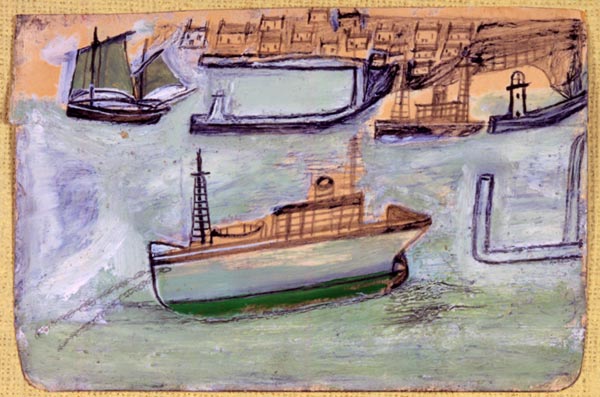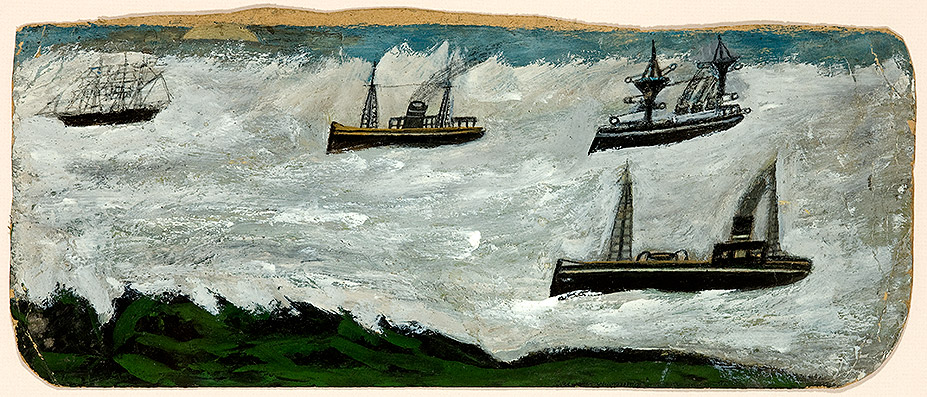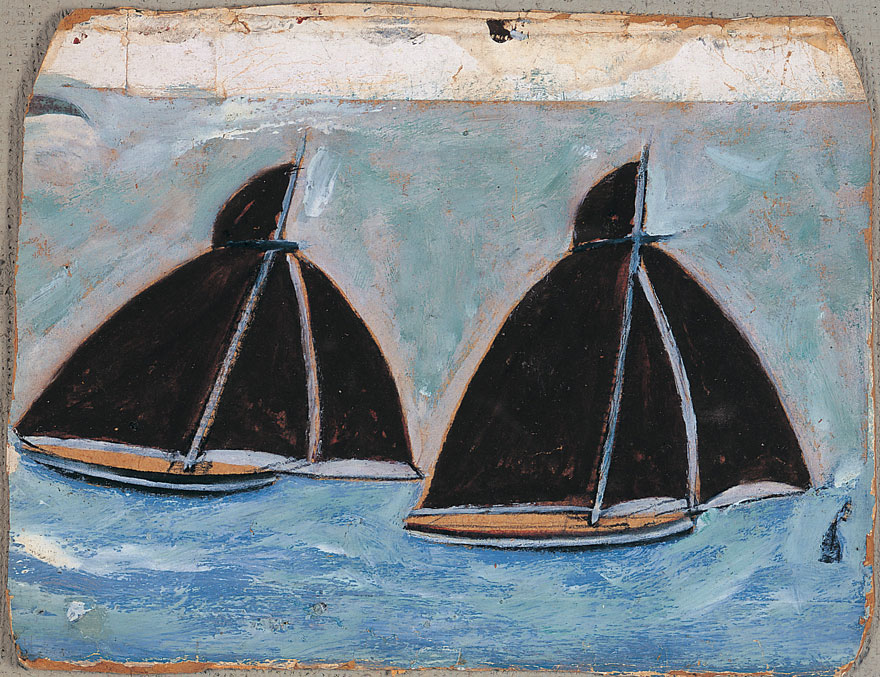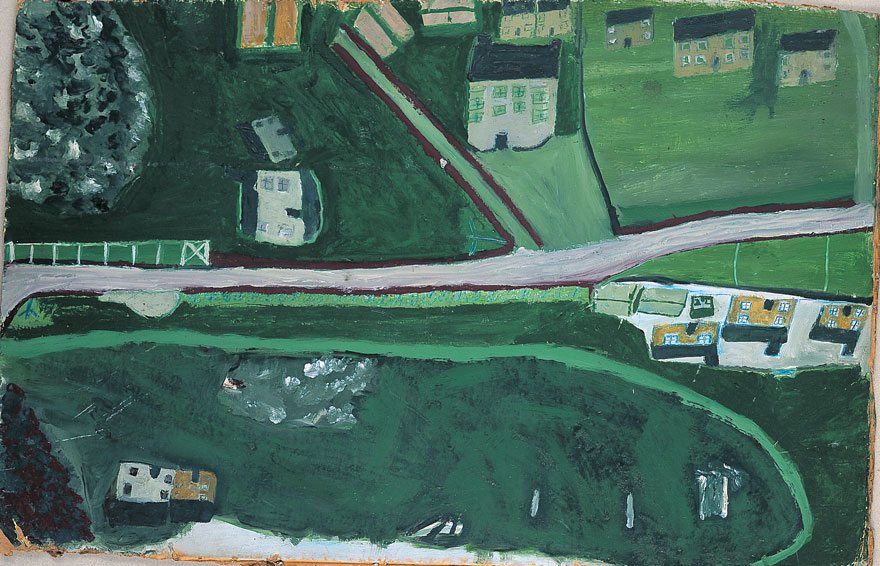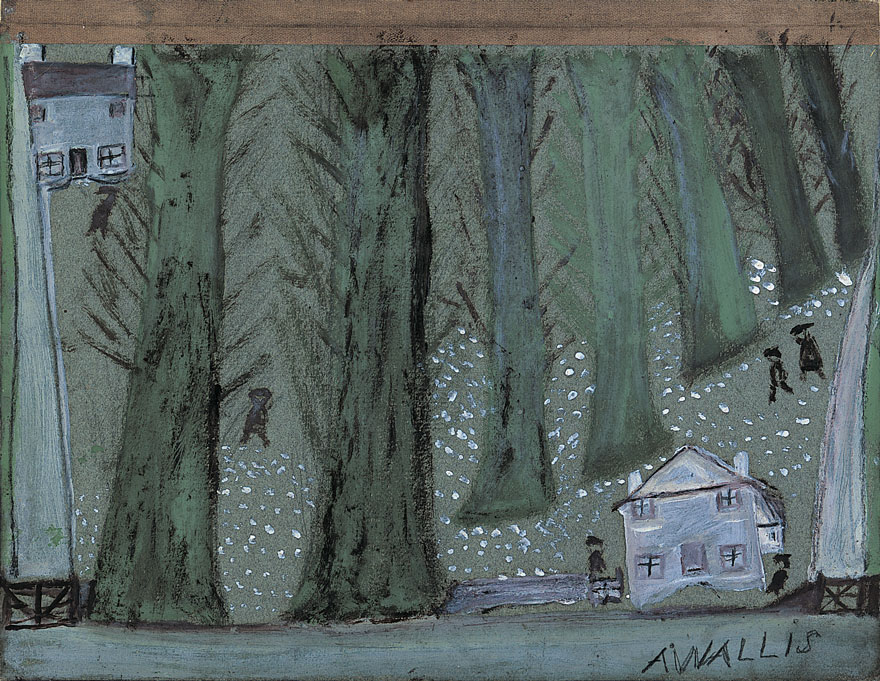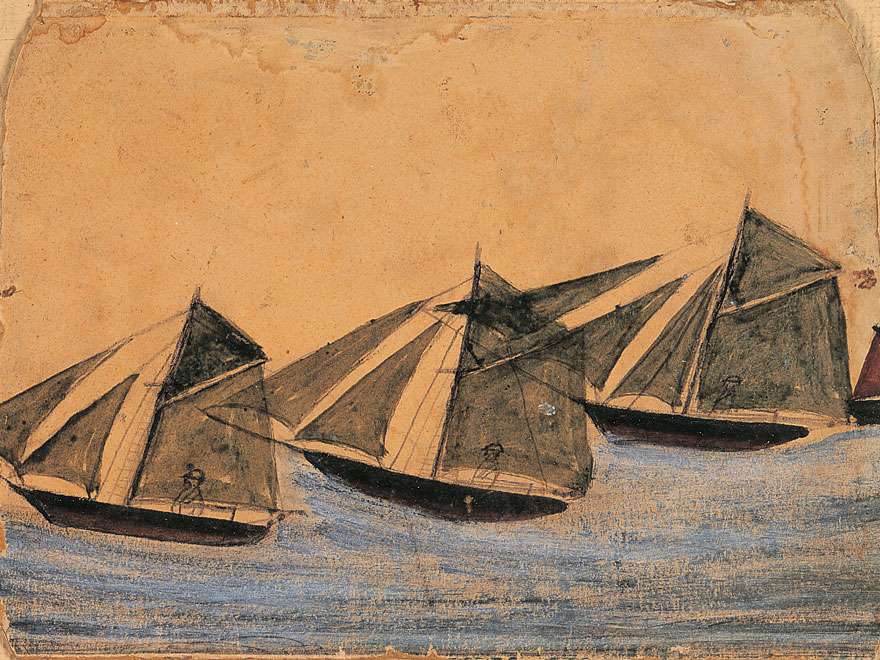Alfred Wallis
1855–1942, English
Tags: Painting
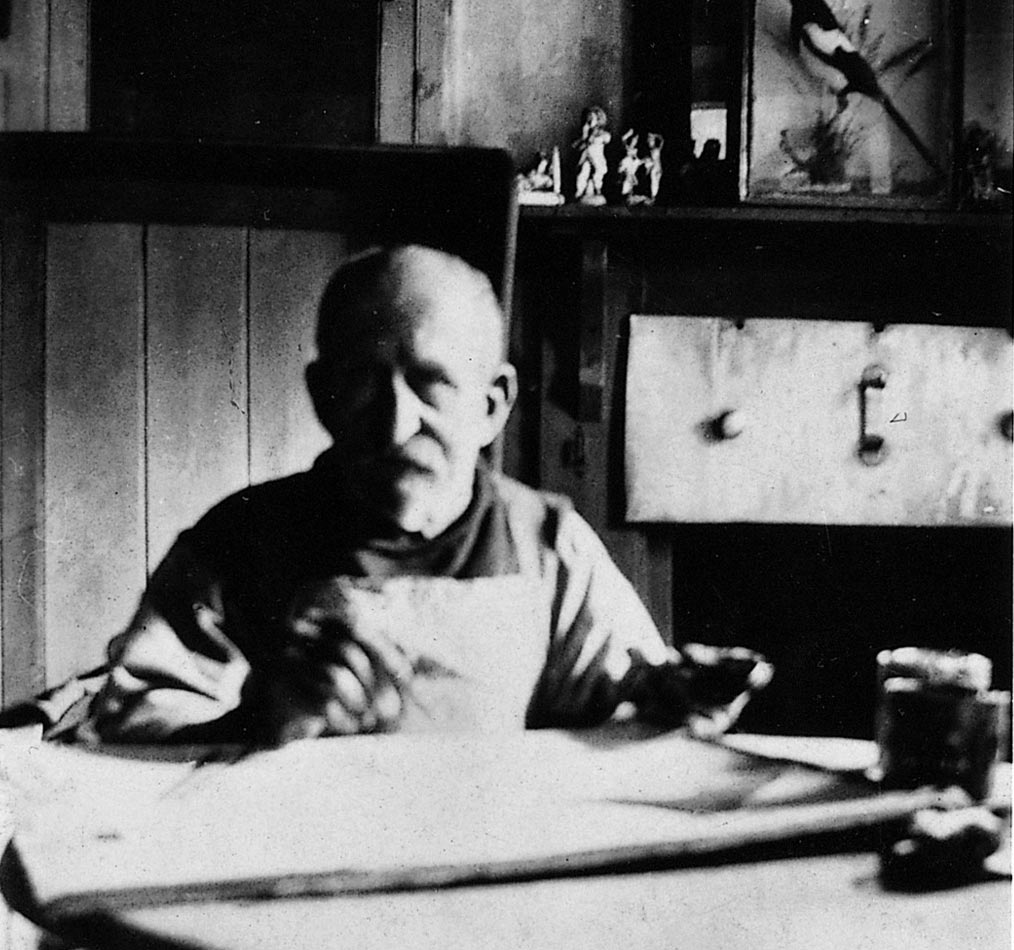
Alfred Wallis’s paintings reflect his deep knowledge of ships and their rigging. He began working as a cabin boy at age nine and later served as a cook on deep-sea schooners, which were no longer in use by the time he began painting them due to the decline of the fishing industry in Cornwall. Wallis commented on a painting of boats with fish beneath them, “Each boat of that fleet had a soul, a beautiful soul shaped like a fish; so they [sic] fish I’ve painted aren’t fish at all.”1 Working from memory, he also painted harbors, bridges, forests, and animals. A daily reader of the Bible, he occasionally depicted religious scenes.
Portfolio of Work
Click Arrows to View More Artwork
In 1876, when he married a widow twenty-three years his senior, Wallis listed “Mariner, Merchant Service” as his profession. He also worked as an inshore fisherman. After he and his family moved to St. Ives, Cornwall, in 1887, he worked as a marine stores dealer. His wife died in 1922, and Wallis started painting three years later. In 1928 he met Ben Nicholson and Christopher Wood, younger trained artists who promoted his work. They were particularly impressed by how Wallis composed pictures in response to irregular pieces of cardboard, sometimes trimming the shapes to create a more desirable effect. He also painted the walls, tabletop, trays, cups, and bellows in his home. Although his work was appreciated and shown in several exhibitions and publications during his lifetime, he received little financial gain. In 1941 he was taken to the Penwith District workhouse, where he died a year later. Moved by the fact that the artist spent his last days in a workhouse, Sven Berlin wrote the first biography of Wallis in 1949.
Wallis’s work continues to gain recognition and was celebrated in the 1999–2000 exhibition Two Painters: Works by Alfred Wallis and James Dixon at the Irish Museum of Modern Art, Dublin, which traveled to the Tate Gallery St. Ives.
